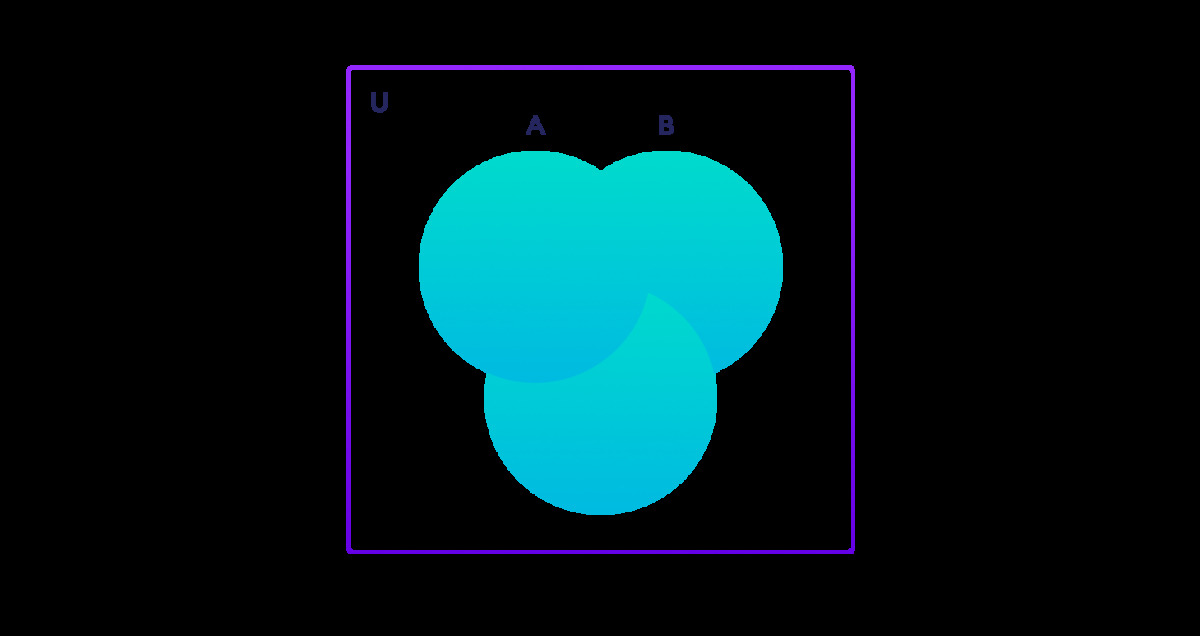在本教程中,我们将借助示例了解 Python Set union() 方法。
Python set union() 方法返回一个新集合,其中包含来自所有集合的不同元素。
示例
A = {2, 3, 5}
B = {1, 3, 5}
# compute union between A and B
print('A U B = ', A.union(B))
# Output: A U B = {1, 2, 3, 5}
用法:
用法:
A.union(*other_sets)
注意: *不是语法的一部分。它用于指示该方法可以采用 0 个或多个参数。
返回:
union()方法返回一个新集合,其中包含来自集合和所有其他集合的元素(作为参数传递)。- 如果参数未传递给
union(),则返回集合的浅拷贝。
示例 1:Python 集 union()
A = {'a', 'c', 'd'}
B = {'c', 'd', 2 }
C = {1, 2, 3}
print('A U B =', A.union(B))
print('B U C =', B.union(C))
print('A U B U C =', A.union(B, C))
print('A.union() =', A.union())
输出
A U B = {2, 'a', 'd', 'c'}
B U C = {1, 2, 3, 'd', 'c'}
A U B U C = {1, 2, 3, 'a', 'd', 'c'}
A.union() = {'a', 'd', 'c'}
Set Union 的工作
两个或多个集合的并集是所有集合中存在的所有不同元素的集合。例如:
A = {1, 2}
B = {2, 3, 4}
C = {5}
Then,
A∪B = B∪A = {1, 2, 3, 4}
A∪C = C∪A = {1, 2, 5}
B∪C = C∪B = {2, 3, 4, 5}
A∪B∪C = {1, 2, 3, 4, 5}

示例 2:使用 | 设置联合操作符
您还可以使用 | 运算符找到集合的并集。
A = {'a', 'c', 'd'}
B = {'c', 'd', 2 }
C = {1, 2, 3}
print('A U B =', A| B)
print('B U C =', B | C)
print('A U B U C =', A | B | C)
输出
A U B = {2, 'a', 'c', 'd'}
B U C = {1, 2, 3, 'c', 'd'}
A U B U C = {1, 2, 3, 'a', 'c', 'd'} 相关用法
- Python Set update()用法及代码示例
- Python Set issuperset()用法及代码示例
- Python Set difference_update()用法及代码示例
- Python Set pop()用法及代码示例
- Python Set add()用法及代码示例
- Python Set clear()用法及代码示例
- Python Set issubset()用法及代码示例
- Python Set isdisjoint()用法及代码示例
- Python Set intersection_update()用法及代码示例
- Python Set symmetric_difference()用法及代码示例
- Python Set symmetric_difference_update()用法及代码示例
- Python Set discard()用法及代码示例
- Python Set intersection()用法及代码示例
- Python Set copy()用法及代码示例
- Python Set difference()用法及代码示例
- Python Set remove()用法及代码示例
- Python Set转String用法及代码示例
- Python Pandas Series.cumsum()用法及代码示例
- Python Pandas Series.astype()用法及代码示例
- Python Pandas Series.nonzero()用法及代码示例
注:本文由纯净天空筛选整理自 Python Set union()。非经特殊声明,原始代码版权归原作者所有,本译文未经允许或授权,请勿转载或复制。
